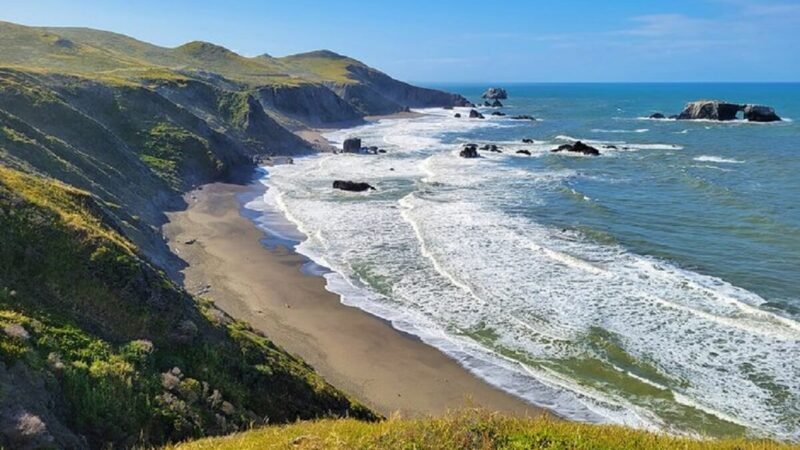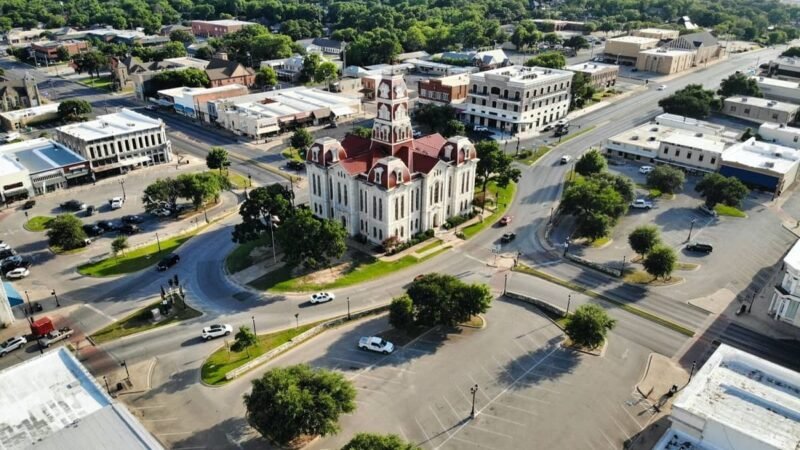Top Attractions in Knoxville, Tennessee

KNOXVILLE, TN (July 16, 2019) – As summer winds down and fall approaches, it’s a great time to plan your next getaway. Knoxville offers something for everyone and you’ll find no shortage of things to do during your stay. From the two-story haunted house at the Hard Rock Café to the breathtaking views from Fort Sanders, here are ten attractions that will help you make the most of your visit.
Knoxville, Tennessee, is a city that has it all. It’s the second-largest city in Tennessee and also serves as the county seat of Knox County. To explore this beautiful place, visit the following attractions. The main attractions in Knoxville, Tennessee are Knoxville Zoo, the Warner Theatre, the Blount Mansion, The University of Tennessee, the University of Tennessee’s Neyland Stadium, The Martin Luther King Jr. National Historic Site, and the Rock Island Depot.
Table of Contents
Knoxville Zoo
This is an easy place to spend a day. The zoo features different habitats from Africa, Australia, and the United States of America that make for pleasant animal viewing. Its two entrances are easily accessible by vehicle or public transportation during the week and on weekends with free shuttle service available between 9:30 am – 5 pm Monday through Friday (9 am till 12m on Sunday).
Though located in Memorial Park about eight miles west of downtown Knoxville, the Knoxville Zoo is well known for its exotic animals such as koalas, wallabies, and red kangaroos. Visitors can also enjoy crocodiles and camels on display in a large area of tropical plants behind an enclosed barn.
The Warner Theatre
This beautiful theater is a perfect place to spend the night. Readings are held here every Friday and Saturday evening at 8 pm (on tickets available until midnight), which makes this location another great choice for date nights in Knoxville.
The Rock Island Depot was Built on October 4, 1894, by William Maitland Watson as part of his dream of bringing civilization to southern Illinois through rail lines designed specifically for agriculture products, The Rock island depot, and passenger station are in the western Illinois town of Hoopeston. It is located off US 34 at Depot Street, a couple of blocks from First (Main) and Market Streets.
The famous depot has been listed on the National Register of Historic Places since 1984 and was placed on MPSR’s historic building list in 1997. Grand thoughts were held for this railroad during its construction, it is designed to house all agricultural products so people could travel by rail.
The Blount Mansion
Blount, Knox County’s best-known claim to fame is the historic Blount Mansion. Located in Germantown near Brevard, it was built in 1822 by wealthy merchants and founders of a vast mercantile empire – Silas Blount (1771–1851). The site Thomas Jefferson once considered for his University has become home to such notable figures as Napoleon Bonaparte’s sister Pauline de Decker Taylor and General Andrew Jackson’s wife Rachel Donelson Robards.
The former Blount home is now the property of what may soon be a nonprofit museum for some brief period; you can wander its rooms and see how it was filled with objects reflecting Jefferson’s collection, as well as paintings by major European artists at that time including Canaletto, Rembrandt Peale and Angelica Kauffman Redenwick (1788–1872 ).
Rentschler Forest Preserve Park – Rock Island is a public park located on the Mississippi River in East Moline, Illinois. The 1,400-acre (5.6 km²) property was purchased by citizens of East Moline and early settlers from surrounding townships to form what would become Rentschler Forest Preserve after World War II civilian officials recognized its potential as an outdoor recreational area for families to explore natures.
The University of Tennessee
Situated on the corner of South College and Broadway, is The University of Tennessee. The neoclassical design of the building was built in 1911, which sat atop an earlier building from 1858.
William Wintersteen (1865–1928) designed the monument for President James K. Polk in Knoxville’s Lorraine Park, which did not include statues at either end as mentioned above; however, it did have one 360-degree walkway around all statuary and all of the building’s walls were covered in windows. Wintersteen, often working on commission, was a successful architect during his lifetime and the 1924 ruins may still be seen there today.
The old University of Tennessee Coliseum is 16 stories tall holding over 10 thousand people for basketball games or concerts but recent renovations have brought Kemper Arena to life again bringing more than 17 thousand seats with an array of state-of-the-art scoreboards, crown molding, and padded seats.
The Martin Luther King Jr. National Historic Site
This site is maintained by the U.S. National Park Service as a memorial to Martin Luther King Jr., a man whose “dream of human dignity and freedom, passionately and eloquently articulated during his lifetime, continues in our hearts.” The park commemorates both Dr. King’s life-long commitment to nonviolent nonviolence as well that fight for civil rights and equality in America from 1949 through 1968 when he has assassinated an early advocate of African American equality. His 1941 hotel registration with the National Park Service is also on display in this park.
The area surrounding his home, The Lorraine Motel has been remembered as a place of intensive activity where Dr. King resided throughout these years; and allegedly were two nights he believed was about to be discovered as an anti-war spy for Soviet Russia before it happened during that time period following World War II (1945), “…when a mysterious FBI Agent “had been tailing Dr. King for a year and ordered him to leave the country.”
The Rock Island Depot
The Rock Island Depot was built in 1890 and has become a symbol of the city of Memphis. It is listed as part-owners with mayor A C Wharton because it served as an important depot for most rail companies that serviced this region since its building until the later 1950s when access through a set-back track ended passenger service by all US Railroads excepting Southern Railway.
Today’s Amtrak passenger trains to serve nearby towns such transportation became way too expensive for most railroads to handle passenger service. The depot is on the National Register of Historic Places and a Tennessee Historical Commission site.
It was added in 1992 as one of eleven Mississippi River crossings contributing “to general economic, cultural or recreational development noted for architecture that represents an event, movement or achievement that made a contribution to history”. So, the depot was important to the area, but it is not open to the public.
Knoxville is a city in the U.S. state of Tennessee and the county seat of Knox County. It is located in East Tennessee and borders the Obion River on the east side. The city had a population of 185,006 as of 2015, making it the eighth-largest city in Tennessee but also one of its fastest-growing cities.
Knoxville is the principal city of the Knoxville Metropolitan Statistical Area, which, in 2016, was home to 1,869,210 people. The KMSA is especially important for economic development purposes because it has been designated by government agencies as an “urban enterprise zone.”





